|
|
|
| Rust in one form or another is a common problem for may woodworkers. It doesn't take too much effort to remedy the problem unless there has been some serious neglect or incident that has allowed rust to penetrate the surface greatly. This article describes how I treat the most common form of rust found on woodworking machine surface, light surface rust caused by condensation.
|
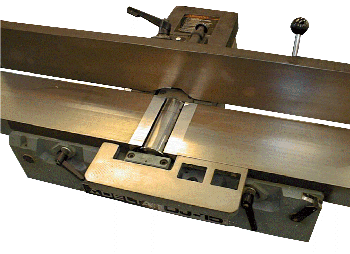 |
This first image is the "before" view. As it
turns out, rust doesn't take a very good picture here. If you look for it you can
see a red colored discoloration on the beds of the jointer and the fence as well. It should be pointed out that this light rust would go away all by itself if a few hundred board feet of lumber were run through the machine; this of coarse would mark the first few pieces of stock. |
| The first step is to remove or disassemble parts of the machine
as required to make the following steps easier. In the case of this jointer the
fence and its supporting bracket were removed. The first thing I like to do is use a random orbit sander with a 120g or 150g disk and go over the surfaces until they are free of rust. This will leave swirl marks on cast iron surfaces that have been finely ground but this is okay to me. It is important that one use even pressure when using the sander, digging in to remove rust pits will only make a dip in the table and should not be done. I have also used finer grit disks before but there doesn't seem to be much benefit in doing so. |
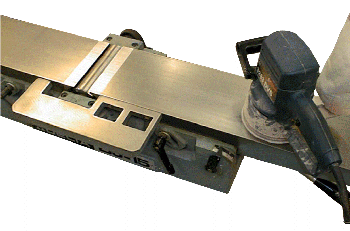 |
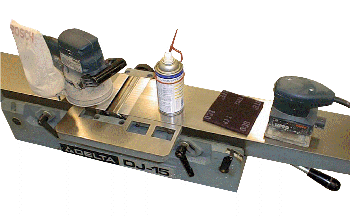 |
The next step is to use a scotch pad with an oil lubricant to
more finely prep the surface, I use WD-40, a maroon pad, and a small vibrator sander for
this step. The purpose of this step is to remove any residual rust and make the surface a little prettier than the one the orbital sander gives. |
| After the scotch pad sanding the surface needs to be cleaned.
There are several solvents that will work, alcohol, acetone, lacquer thinner,
mineral spirits..., pick which ever one you like. You could also just wipe the oil
off. A light oil like WD-40 will dissipate fairly quickly and not mark the stock
surface if care is taken to buff the oil off of the surface, however using a solvent is
the safest way to ensure the stock does not get contaminated. This could complete the process if one wished, however a little protection will keep rust at bay and make the surface a little slicker. |
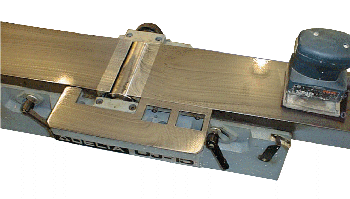 |
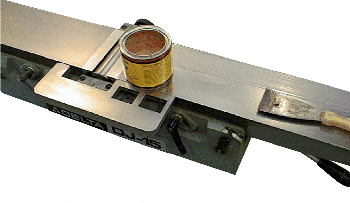 |
The last step is to apply a paste wax and buff it out after it
has dried. Just about any paste wax will work for this, I like to apply it with a
putty knife, it seems to adhere to the surface better that way for some reason. One reason the afore-mentioned random orbit swirl marks don't bother me is that I think they provide a little bit more area for the wax to go into, it also makes for a fairly uniform sheen. |
| This procedure is also good to do with a new machine
after the protective coatings have been removed. As long as the machine is in this
state it is also an opportune time to perform a general tune-up and any periodic
maintenance that may be required.
|
|